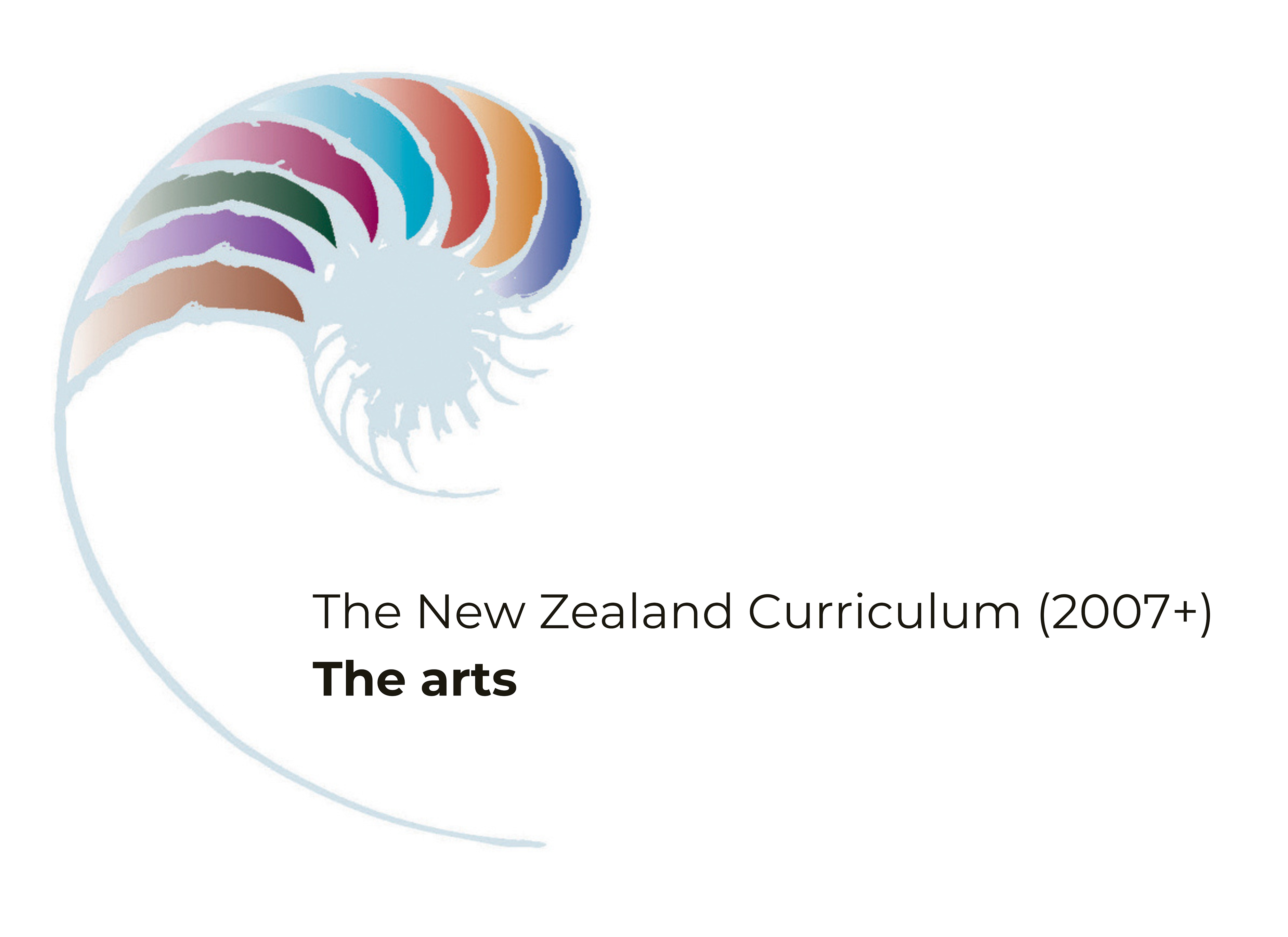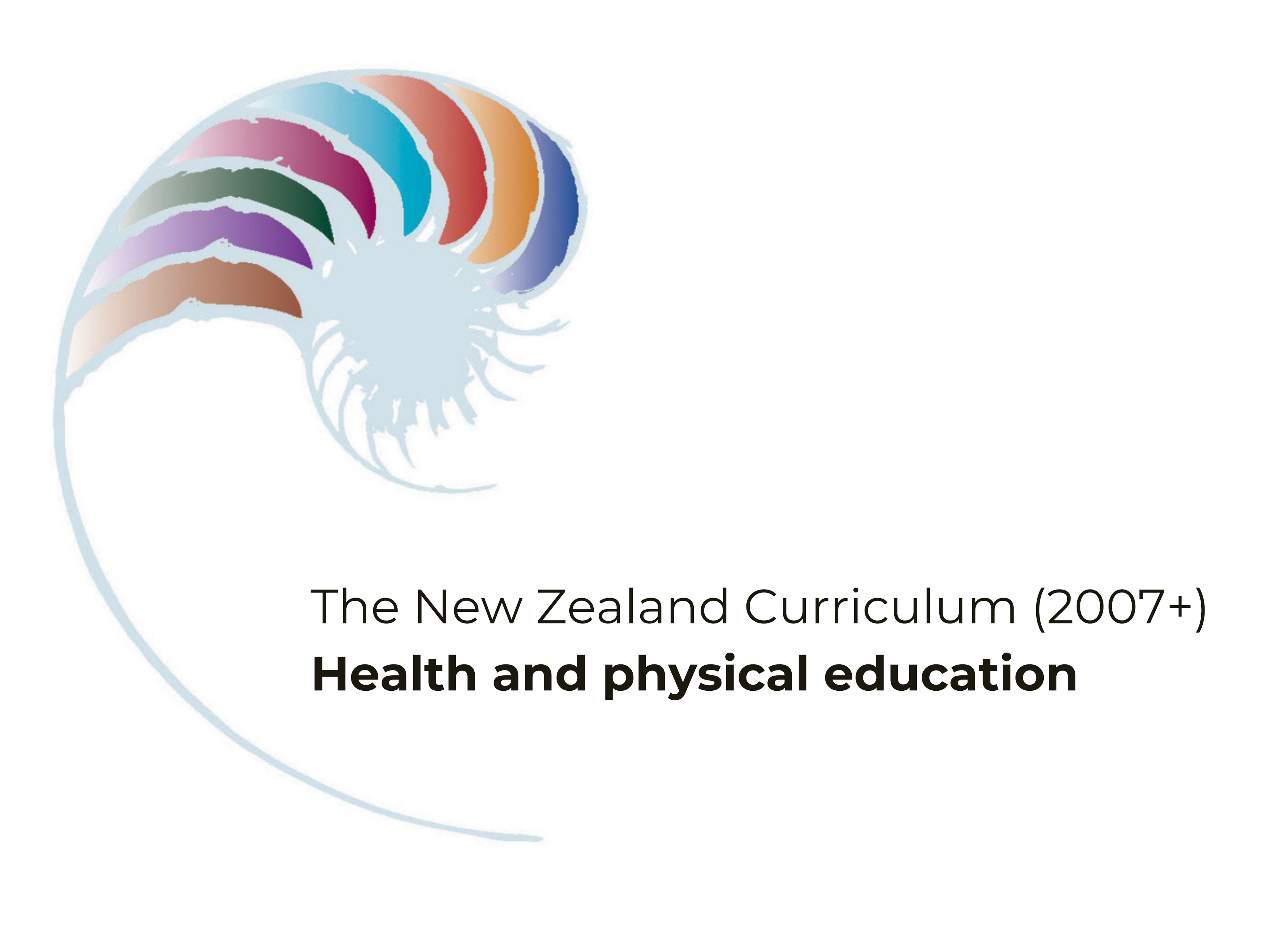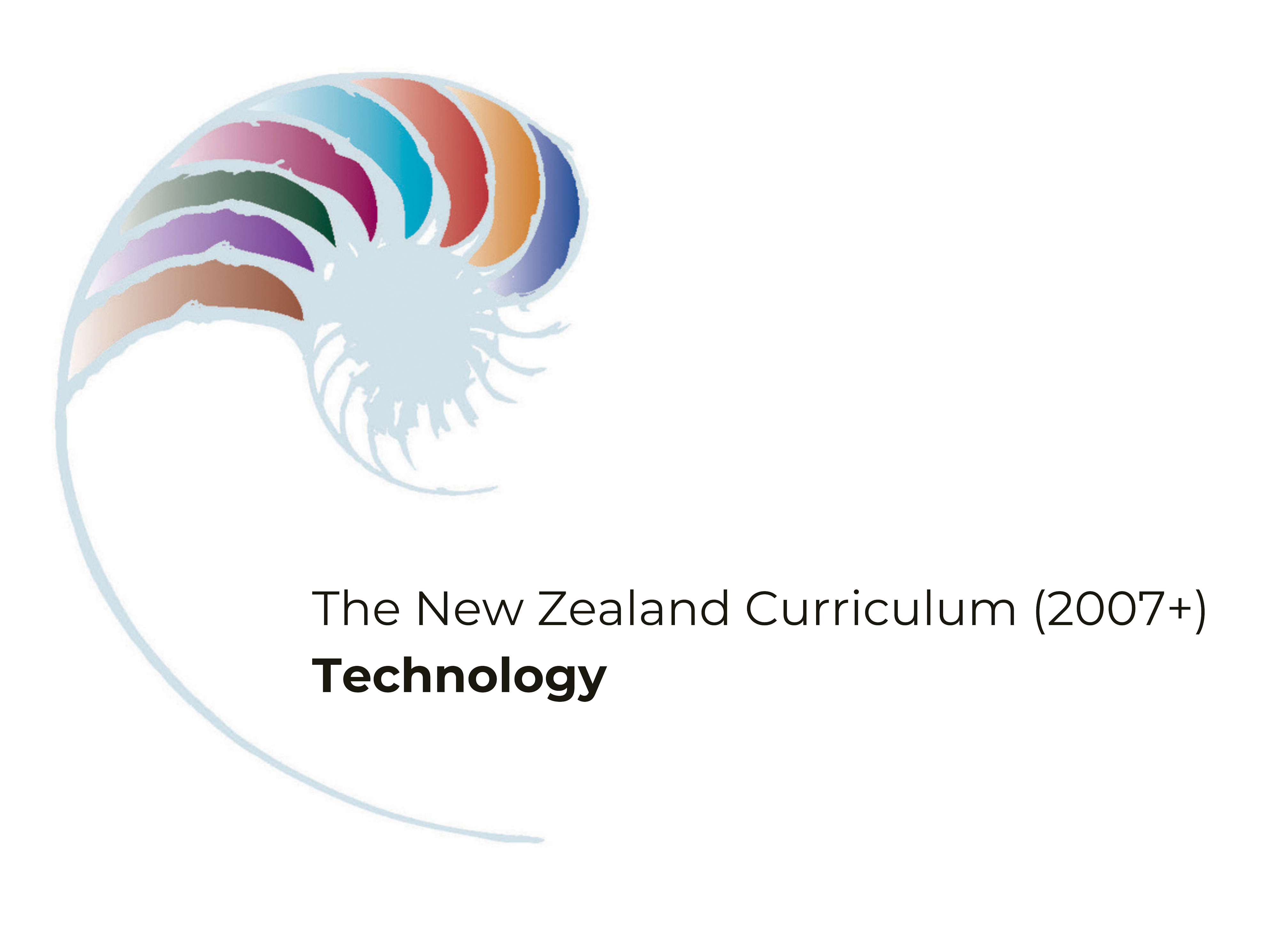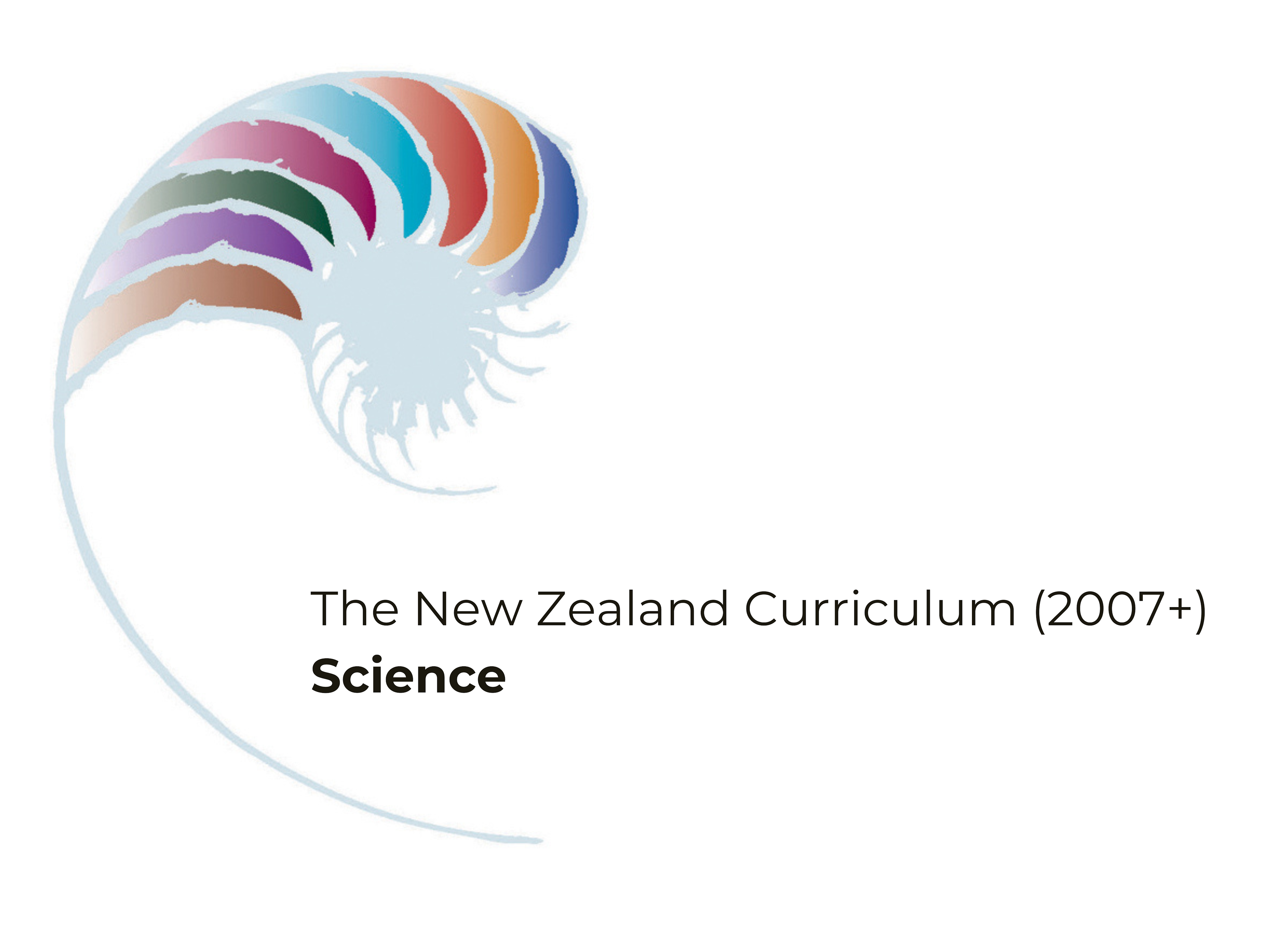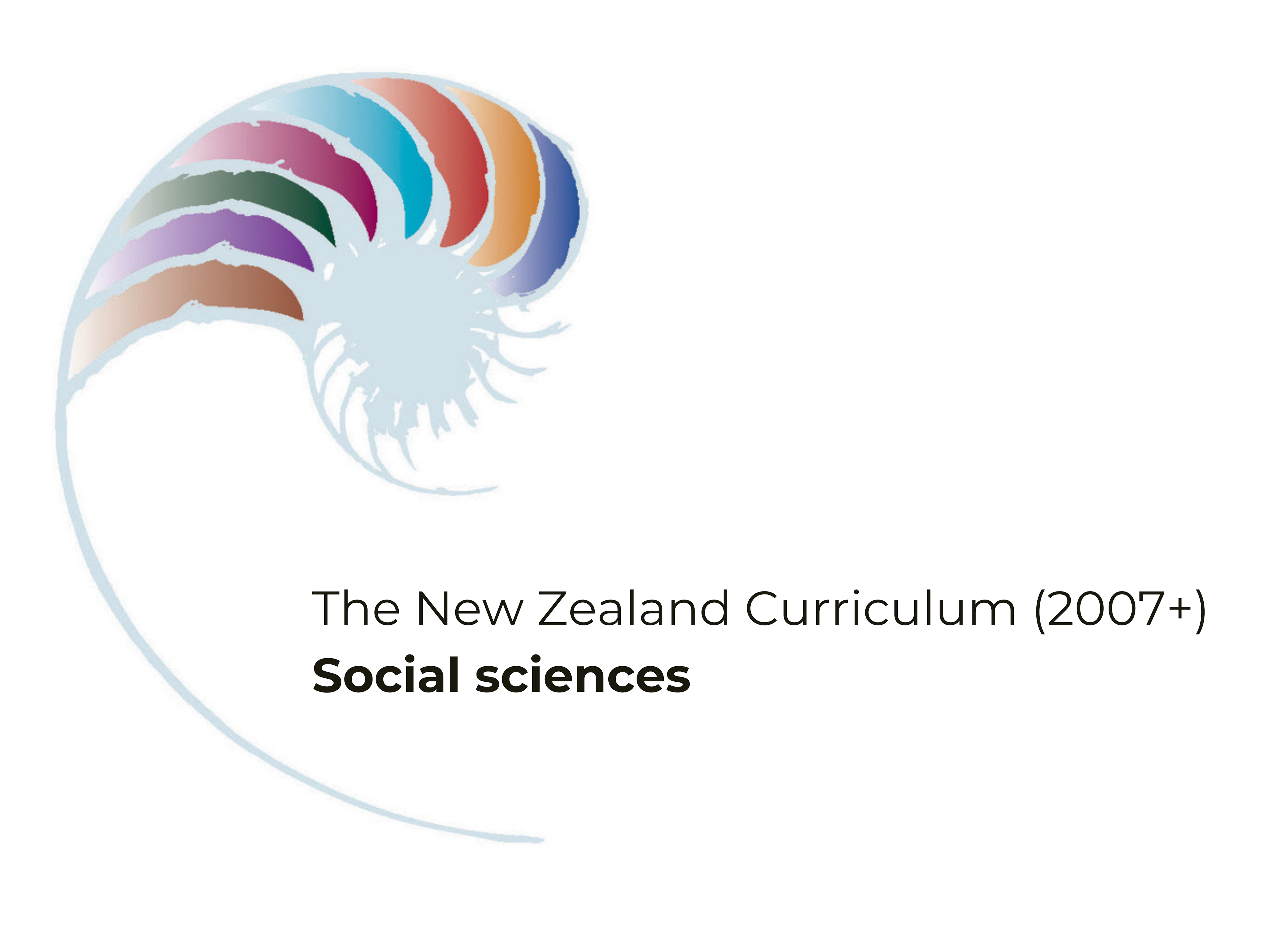The New Zealand Curriculum - Mathematics and statistics
Statement of official policy relating to teaching, learning and assessment of mathematics and statistics in all English medium state and state-integrated schools in New Zealand.

Tags
- AudienceSchool leadersKaiakoSchool boards
- Learning AreaMathematics and Statistics
- Resource LanguageEnglish
- Resource typeText/Website
About this resource
Mathematics and statistics is one of the learning areas in the New Zealand Curriculum, the official document that sets the direction for teaching, learning, and assessment in all English medium state and state-integrated schools in New Zealand. In mathematics and statistics, students explore relationships in quantities, space, and data and learn to express these relationships in ways that help them to make sense of the world around them. From 1 January 2025 the content on this page will only cover Years 9-13. The content covering Years 0-8 which comes into effect from 1 January 2025 is provided on a companion page.
Add to collection
The New Zealand Curriculum - Mathematics and statistics
What is mathematics and statistics about?
Kei hopu tōu ringa ki te aka tāepa,
engari kia mau ki te aka matua.
Cling to the main vine, not the loose one.
Mathematics is the exploration and use of patterns and relationships in quantities, space, and time. Statistics is the exploration and use of patterns and relationships in data. These two disciplines are related but have different ways of thinking and solving problems. Both equip students with effective means for investigating, interpreting, explaining, and making sense of the world in which they live.
Mathematicians and statisticians use symbols, graphs, and diagrams to help them find and communicate patterns and relationships, and they create models to represent both real-life and hypothetical situations. These situations are drawn from a wide range of social, cultural, scientific, technological, health, environmental, and economic contexts.
- Why study mathematics and statistics?
- Learning area structure
- Achievement objectives
- Teaching time requirements
By studying mathematics and statistics, students develop the ability to think creatively, critically, strategically, and logically. They learn to structure and to organise, to carry out procedures flexibly and accurately, to process and communicate information, and to enjoy intellectual challenge.
By learning mathematics and statistics, students develop other important thinking skills. They learn to create models and predict outcomes, to conjecture, to justify and verify, and to seek patterns and generalisations. They learn to estimate with reasonableness, calculate with precision, and understand when results are precise and when they must be interpreted with uncertainty. Mathematics and statistics have a broad range of practical applications in everyday life, in other learning areas, and in workplaces.
The achievement objectives are presented in three strands. It is important that students can see and make sense of the many connections within and across these strands.
Number and algebra: Number involves calculating and estimating, using appropriate mental, written, or machine calculation methods in flexible ways. It also involves knowing when it is appropriate to use estimation and being able to discern whether the results are reasonable. Algebra involves generalising and representing the patterns and relationships found in numbers, shapes, and measures.
Geometry and measurement: Geometry involves recognising and using the properties and symmetries of shapes and describing position and movement. Measurement involves quantifying the attributes of objects using appropriate units and instruments. It also involves predicting and calculating rates of change.
Statistics involves identifying problems that can be explored by the use of appropriate data, designing investigations, collecting data, exploring and using patterns and relationships in data, solving problems, and communicating findings. Statistics also involves interpreting statistical information, evaluating data-based arguments, and dealing with uncertainty and variation.
From 1 January 2025 levels 1-4 are removed and replaced with the Mathematics and Statistics Years 0-8 learning area.
Please note that this is the 2007 curriculum content for this learning area. To access the refreshed curriculum, please go to NZC - Mathematics and statistics (Years 0-8).
In a range of meaningful contexts, students will be engaged in thinking mathematically and statistically.
Number and algebra
Number strategies
- They will solve problems and model situations that require them to use a range of counting, grouping, and equal-sharing strategies with whole numbers and fractions.
Number knowledge
They will solve problems and model situations that require them to:
- know the forward and backward counting sequences of whole numbers to 100
- know groupings with five, within ten, and with ten.
Equations and expressions
- They will solve problems and model situations that require them to communicate and explain counting, grouping, and equal-sharing strategies, using words, numbers, and pictures.
Patterns and relationships
They will solve problems and model situations that require them to:
- generalise that the next counting number gives the result of adding one object to a set and that counting the number of objects in a set tells how many
- create and continue sequential patterns.
Geometry and measurement
Measurement
- They will solve problems and model situations that require them to order and compare objects or events by length, area, volume and capacity, weight (mass), turn (angle), temperature, and time by direct comparison and/or counting whole numbers of units.
Shape
- They will solve problems and model situations that require them to sort objects by their appearance.
Position and orientation
They will solve problems and model situations that require them to:
- give and follow instructions for movement that involve distances, directions, and half or quarter turns
- describe their position relative to a person or object.
Transformation
- They will solve problems and model situations that require them to communicate and record the results of translations, reflections, and rotations on plane shapes.
Statistics
Statistical investigation
They will solve problems and model situations that require them to conduct investigations using the statistical enquiry cycle:
- posing and answering questions
- gathering, sorting and counting, and displaying category data
- discussing the results.
Statistical literacy
- They will solve problems and model situations that require them to interpret statements made by others from statistical investigations and probability activities.
Probability
- They will solve problems and model situations that require them to investigate situations that involve elements of chance, acknowledging and anticipating possible outcomes.
In a range of meaningful contexts, students will be engaged in thinking mathematically and statistically.
Number and algebra
Number strategies
- They will solve problems and model situations that require them to use simple additive strategies with whole numbers and fractions.
Number knowledge
They will solve problems and model situations that require them to:
- know forward and backward counting sequences with whole numbers to at least 1000
- know the basic addition and subtraction facts
- know how many ones, tens, and hundreds are in whole numbers to at least 1000
- know simple fractions in everyday use.
Equations and expressions
- They will solve problems and model situations that require them to communicate and interpret simple additive strategies, using words, diagrams (pictures), and symbols.
Patterns and relationships
They will solve problems and model situations that require them to:
- generalise that whole numbers can be partitioned in many ways
- find rules for the next member in a sequential pattern.
Geometry and measurement
Measurement
They will solve problems and model situations that require them to:
- create and use appropriate units and devices to measure length, area, volume and capacity, weight (mass), turn (angle), temperature, and time
- partition and/or combine like measures and communicate them, using numbers and units.
Shape
They will solve problems and model situations that require them to:
- sort objects by their spatial features, with justification
- identify and describe the plane shapes found in objects.
Position and orientation
They will solve problems and model situations that require them to:
- create and use simple maps to show position and direction
- describe different views and pathways from locations on a map.
Transformation
- They will solve problems and model situations that require them to predict and communicate the results of translations, reflections, and rotations on plane shapes.
Statistics
Statistical investigation
They will solve problems and model situations that require them to conduct investigations using the statistical enquiry cycle:
- posing and answering questions
- gathering, sorting, and displaying category and whole-number data
- communicating findings based on the data.
Statistical literacy
- They will solve problems and model situations that require them to compare statements with the features of simple data displays from statistical investigations or probability activities undertaken by others.
Probability
- They will solve problems and model situations that require them to investigate simple situations that involve elements of chance, recognising equal and different likelihoods, and acknowledging uncertainty.
In a range of meaningful contexts, students will be engaged in thinking mathematically and statistically.
Number and algebra
Number strategies
- They will solve problems and model situations that require them to use a range of additive and simple multiplicative strategies with whole numbers, fractions, decimals, and percentages.
Number knowledge
They will solve problems and model situations that require them to:
- know basic multiplication and division facts
- know counting sequences for whole numbers
- know how many tenths, tens, hundreds, and thousands are in whole numbers
- know fractions and percentages in everyday use.
Equations and expressions
- They will solve problems and model situations that require them to record and interpret additive and simple multiplicative strategies, using, words, diagrams, and symbols, with an understanding of equality.
Patterns and relationships
They will solve problems and model situations that require them to:
- generalise the properties of addition and subtraction with whole numbers
- connect members of sequential patterns with their ordinal position and use tables, graphs, and diagrams to find relationships between successive elements of number and spatial patterns.
Geometry and measurement
Measurement
They will solve problems and model situations that require them to:
- use linear scales and whole numbers of metric units for length, area, volume and capacity, weight (mass), angle, temperature, and time
- find areas of rectangles and volumes of cuboids by applying multiplication.
Shape
They will solve problems and model situations that require them to:
- classify plane shapes and prisms by their spatial features
- represent objects with drawings and models.
Position and orientation
- They will solve problems and model situations that require them to use a coordinate system or the language of direction and distance to specify locations and describe paths.
Transformation
- They will solve problems and model situations that require them to describe the transformations (reflection, rotation, translation, or enlargement) that have mapped one object onto another.
Statistics
Statistical investigation
They will solve problems and model situations that require them to conduct investigations using the statistical enquiry cycle:
- gathering, sorting, and displaying multivariate category and whole-number data and simple time-series data to answer questions
- identifying patterns and trending in context, within and between data sets
- communicating findings, use data displays.
Statistical literacy
- They will solve problems and model situations that require them to evaluate the effectiveness of different displays in representing the findings of a statistical investigation or probability activity undertaken by others.
Probability
- They will solve problems and model situations that require them to investigate simple situations that involve elements of chance by comparing experimental results with expectations from models of all the outcomes, acknowledging that samples vary.
In a range of meaningful contexts, students will be engaged in thinking mathematically and statistically.
Number and algebra
Number strategies and knowledge
They will solve problems and model situations that require them to:
- use a range of multiplicative strategies when operating on whole numbers
- understand addition and subtraction of fractions, decimals, and integers
- find fractions, decimals, and percentages of amounts expressed as whole numbers, simple fractions, and decimals
- apply simple linear proportions, including ordering fractions
- know the equivalent decimal and percentage forms for everyday fractions
- know the relative size and place value structure of positive and negative integers and decimals to three places.
Equations and expressions
- They will solve problems and model situations that require them to form and solve simple linear equations.
Patterns and relationships
They will solve problems and model situations that require them to:
- generalise properties of multiplication and division with whole numbers
- use graphs, tables, and rules to describe linear relationships found in number and spatial patterns.
Geometry and measurement
Measurement
They will solve problems and model situations that require them to:
- use appropriate scales, devices, and metric units for length, area, volume and capacity, weight (mass), temperature, angle, and time
- convert between metric units, using whole numbers and commonly used decimals
- use side or edge lengths to find the perimeters and areas of rectangles, parallelograms, and triangles and the volumes of cuboids
- interpret and use scales, timetables, and charts.
Shape
They will solve problems and model situations that require them to:
- identify classes of two- and three-dimensional shapes by their geometric properties
- relate three-dimensional models to two-dimensional representations, and vice versa.
Position and orientation
- They will solve problems and model situations that require them to communicate and interpret locations and directions, using compass directions, distances, and grid references.
Transformation
- They will solve problems and model situations that require them to use the invariant properties of figures and objects under transformations (reflection, rotation, translation, or enlargement).
Statistics
Statistical investigation
They will solve problems and model situations that require them to plan and conduct investigations using the statistical enquiry cycle:
- determining appropriate variables and data collection methods
- gathering, sorting, and displaying multivariate category, measurement, and time-series data to detect patterns, variations, relationships, and trends
- comparing distributions visually
- communicating findings, using appropriate displays.
Statistical literacy
- They will solve problems and model situations that require them to evaluate statements made by others about the findings of statistical investigations and probability activities.
Probability
They will solve problems and model situations that require them to:
- investigate situations that involve elements of chance by comparing experimental distributions with expectations from models of the possible outcomes, acknowledging variation and independence
- use simple fractions and percentages to describe probabilities.
In a range of meaningful contexts, students will be engaged in thinking mathematically and statistically.
Number and algebra
Number strategies and knowledge
They will solve problems and model situations that require them to:
- reason with linear proportions
- use prime numbers, common factors and multiples, and powers (including square roots)
- understand operations on fractions, decimals, percentages, and integers
- use rates and ratios
- know commonly used fraction, decimal, and percentage conversions
- know and apply standard form, significant figures, rounding, and decimal place value.
Equations and expressions
- They will solve problems and model situations that require them to form and solve linear and simple quadratic equations.
Patterns and relationships
They will solve problems and model situations that require them to:
- generalise the properties of operations with fractional numbers and integers
- relate tables, graphs, and equations to linear and simple quadratic relationships found in number and spatial patterns.
Geometry and measurement
Measurement
They will solve problems and model situations that require them to:
- select and use appropriate metric units for length, area, volume and capacity, weight (mass), temperature, angle, and time, with awareness that measurements are approximate
- convert between metric units, using decimals
- deduce and use formulae to find the perimeters and areas of polygons and the volumes of prisms
- find the perimeters and areas of circles and composite shapes and the volumes of prisms, including cylinders.
Shape
They will solve problems and model situations that require them to:
- deduce the angle properties of intersecting and parallel lines and the angle properties of polygons and apply these properties
- create accurate nets for simple polyhedra and connect three-dimensional solids with different two-dimensional representations.
Position and orientation
They will solve problems and model situations that require them to:
- construct and describe simple loci
- interpret points and lines on coordinate planes, including scales and bearings on maps.
Transformation
They will solve problems and model situations that require them to:
- define and use transformations and describe the invariant properties of figures and objects under these transformations
- apply trigonometric ratios and Pythagoras’ theorem in two dimensions.
Statistics
Statistical investigation
They will solve problems and model situations that require them to plan and conduct surveys and experiments using the statistical enquiry cycle:
- determining appropriate variables and measures
- considering sources of variation
- gathering and cleaning data
- using multiple displays, and re-categorising data to find patterns, variations, relationships, and trends in multivariate data sets
- comparing sample distributions visually, using measures of centre, spread, and proportion
- presenting a report of findings.
Statistical literacy
- They will solve problems and model situations that require them to evaluate statistical investigations or probability activities undertaken by others, including data collection methods, choice of measures, and validity of findings.
Probability
They will solve problems and model situations that require them to:
- compare and describe the variation between theoretical and experimental distributions in situations that involve elements of chance
- calculate probabilities, using fractions, percentages, and ratios.
In a range of meaningful contexts, students will be engaged in thinking mathematically and statistically.
Number and algebra
Number strategies and knowledge
They will solve problems and model situations that require them to:
- apply direct and inverse relationships with linear proportions
- extend powers to include integers and fractions
- apply everyday compounding rates
- find optimal solutions, using numerical approaches.
Equations and expressions
- They will solve problems and model situations that require them to form and solve linear equations and inequations, quadratic and simple exponential equations, and simultaneous equations with two unknowns.
Patterns and relationships
They will solve problems and model situations that require them to:
- generalise the properties of operations with rational numbers, including the properties of exponents
- relate graphs, tables, and equations to linear, quadratic, and simple exponential relationships found in number and spatial patterns
- relate rate of change to the gradient of a graph.
Geometry and measurement
Measurement
They will solve problems and model situations that require them to:
- measure at a level of precision appropriate to the task
- apply the relationships between units in the metric system, including the units for measuring different attributes and derived measures
- calculate volumes, including prisms, pyramids, cones, and spheres, using formulae.
Shape
They will solve problems and model situations that require them to:
- deduce and apply the angle properties related to circles
- recognise when shapes are similar and use proportional reasoning to find an unknown length
- use trigonometric ratios and Pythagoras’ theorem in two and three dimensions.
Position and orientation
They will solve problems and model situations that require them to use a coordinate plane or map to show points in common and areas contained by two or more loci.
Transformation
They will solve problems and model situations that require them to:
- compare and apply single and multiple transformations
- analyse symmetrical patterns by the transformations used to create them.
Statistics
Statistical investigation
They will solve problems and model situations that require them to plan and conduct investigations using the statistical enquiry cycle:
- justifying the variables and measures used
- managing sources of variation, including through the use of random sampling
- identifying and communicating features in context (trends, relationships between variables, and differences within and between distributions), using multiple displays
- making informal inferences about populations from sample data
- justifying findings, using displays and measures.
Statistical literacy
- They will solve problems and model situations that require them to evaluate statistical reports in the media by relating the displays, statistics, processes, and probabilities used to the claims made.
Probability
They will solve problems and model situations that require them to investigate situations that involve elements of chance:
- comparing discrete theoretical distributions and experimental distributions, appreciating the role of sample size
- calculating probabilities in discrete situations.
In a range of meaningful contexts, students will be engaged in thinking mathematically and statistically.
Mathematics
Patterns and relationships
They will solve problems and model situations that require them to:
- apply coordinate geometry techniques to points and lines
- display the graphs of linear and non-linear functions and connect the structure of the functions with their graphs
- use arithmetic and geometric sequences and series
- apply trigonometric relationships, including the sine and cosine rules, in two and three dimensions
- choose appropriate networks to find optimal solutions.
Equations and expressions
They will solve problems and model situations that require them to:
- manipulate rational, exponential, and logarithmic algebraic expressions
- form and use linear, quadratic, and simple trigonometric equations
- form and use pairs of simultaneous equations, one of which may be non-linear.
Calculus
They will solve problems and model situations that require them to:
- sketch the graphs of functions and their gradient functions and describe the relationship between these graphs
- apply differentiation and anti-differentiation techniques to polynomials.
Statistics
Statistical investigation
They will solve problems and model situations that require them to carry out investigations of phenomena using the statistical enquiry cycle:
- conducting surveys that require random sampling techniques, conducting experiments, and using existing data sets
- evaluating the choice of measures for variables and the sampling and data collection methods used
- using relevant contextual knowledge, exploratory data analysis, and statistical inference.
They will solve problems and model situations that require them to make inferences from surveys and experiments:
- making informal predictions, interpolations, and extrapolations
- using sample statistics to make point estimates of population parameters
- recognising the effect of sample size on the variability of an estimate.
Statistical literacy
They will solve problems and model situations that require them to evaluate statistically based reports:
- interpreting risk and relative risk
- identifying sampling and possible non-sampling errors in surveys, including polls.
Probability
They will solve problems and model situations that require them to investigate situations that involve elements of chance:
- comparing theoretical continuous distributions, such as the normal distribution, with experimental distributions
- calculating probabilities, using such tools as two-way tables, tree diagrams, simulations, and technology.
In a range of meaningful contexts, students will be engaged in thinking mathematically and statistically.
Mathematics
Patterns and relationships
They will solve problems and model situations that require them to:
- apply the geometry of conic sections
- display and interpret the graphs of functions with the graphs of their inverse and/or reciprocal functions
- use permutations and combinations
- use curve fitting, log modelling, and linear programming techniques
- develop network diagrams to find optimal solutions, including critical paths.
Equations and expressions
They will solve problems and model situations that require them to:
- manipulate trigonometric expressions
- form and use trigonometric, polynomial, and other non-linear equations
- form and use systems of simultaneous equations, including three linear equations and three variables, and interpret the solutions in context
- manipulate complex numbers and present them graphically.
Calculus
They will solve problems and model situations that require them to:
- identify discontinuities and limits of functions
- choose and apply a variety of differentiation, integration, and anti-differentiation techniques to functions and relations, using both analytical and numerical methods
- form differential equations and interpret the solutions.
Statistics
Statistical investigation
They will solve problems and model situations that require them to carry out investigations of phenomena using the statistical enquiry cycle:
- conducting experiments using experimental design principles, conducting surveys, and using existing data sets
- finding, using, and assessing appropriate models (including linear regression for bivariate data and additive models for time-series data), seeking explanations, and making predictions
- using informed contextual knowledge, exploratory data analysis, and statistical inference
- communicating findings and evaluating all stages of the cycle.
They will solve problems and model situations that require them to make inferences from surveys and experiments:
- determining estimates and confidence intervals for means, proportions, and differences, recognising the relevance of the central limit theorem
- using methods such as resampling or randomisation to assess the strength of evidence.
Statistical literacy
They will solve problems and model situations that require them to evaluate a wide range of statistically based reports, including surveys and polls, experiments, and observational studies:
- critiquing causal-relationship claims
- interpreting margins of error.
Probability
They will solve problems and model situations that require them to investigate situations that involve elements of chance:
- calculating probabilities of independent, combined, and conditional events
- calculating and interpreting expected values and standard deviations of discrete random variables
- applying distributions such as the Poisson, binomial, and normal.
Reading, writing, and maths teaching time requirements
The teaching and learning of reading, writing, and maths1 is a priority for all schools. So that all students are getting sufficient teaching and learning time for reading, writing, and maths, each school board with students in years 0 to 8 must, through its principal and staff, structure their teaching and learning programmes and/or timetables for delivering the National Curriculum Statements, including this one, to provide:
- 10 hours per week of teaching and learning focussed on supporting their progress and achievement in reading and writing in a typical school week, recognising the important contribution oral language development makes, particularly in the early phases of learning.
- 5 hours per week of teaching and learning focussed on supporting their progress and achievement in maths in a typical school week.
Where reading, writing, and/or maths teaching and learning time is occurring within the context of National Curriculum Statements other than English or mathematics and statistics, progression of students’ reading, writing, and/or maths dispositions, knowledge and skills at the appropriate level must be explicitly and intentionally planned for and attended to.
While the terms reading and writing are used, these expectations are inclusive of alternative methods of communication, including New Zealand Sign Language, augmentative and alternative communication (AAC) and Braille.
1 For simplicity, ‘maths’ is used as an all-encompassing term to refer to the grouping of subject matter, dispositions, skills, competencies, and understandings that encompass all aspects of numeracy, mathematics, and statistics.
These teaching time requirements came in for most schools and kura with students in years 0 to 8 at the start of Term 1, 2024. Specialist schools with students in years 0 - 8 must ensure this from the start of 2025. Kura with a specified kura board must ensure this from Term 3, 2024.
Heading
New Zealand Curriculum
Statement of official policy relating to teaching, learning, and assessment in all English medium state and state-integrated schools in New Zealand.
1 of 8
The New Zealand Curriculum - The arts
Statement of official policy relating to teaching, learning, and assessment of the arts in all English medium state and state-integrated schools in New Zealand.
2 of 8
The New Zealand Curriculum - Health and physical education
Statement of official policy relating to teaching, learning and assessment of health and physical education in all English medium state and state-integrated schools in New Zealand.
3 of 8
The New Zealand Curriculum - Technology
Statement of official policy relating to teaching, learning and assessment of technology in all English medium state and state-integrated schools in New Zealand.
4 of 8
The New Zealand Curriculum - Science
Statement of official policy relating to teaching, learning and assessment of science in all English medium state and state-integrated schools in New Zealand.
5 of 8
The New Zealand Curriculum - Social sciences
Statement of official policy relating to teaching, learning and assessment of social sciences in all English medium state and state-integrated schools in New Zealand.
6 of 8
The New Zealand Curriculum - English
Statement of official policy relating to teaching, learning and assessment of English in all English medium state and state-integrated schools in New Zealand.
7 of 8
The New Zealand Curriculum - Learning languages
Statement of official policy relating to teaching, learning and assessment of learning languages in all English medium state and state-integrated schools in New Zealand.
8 of 8




